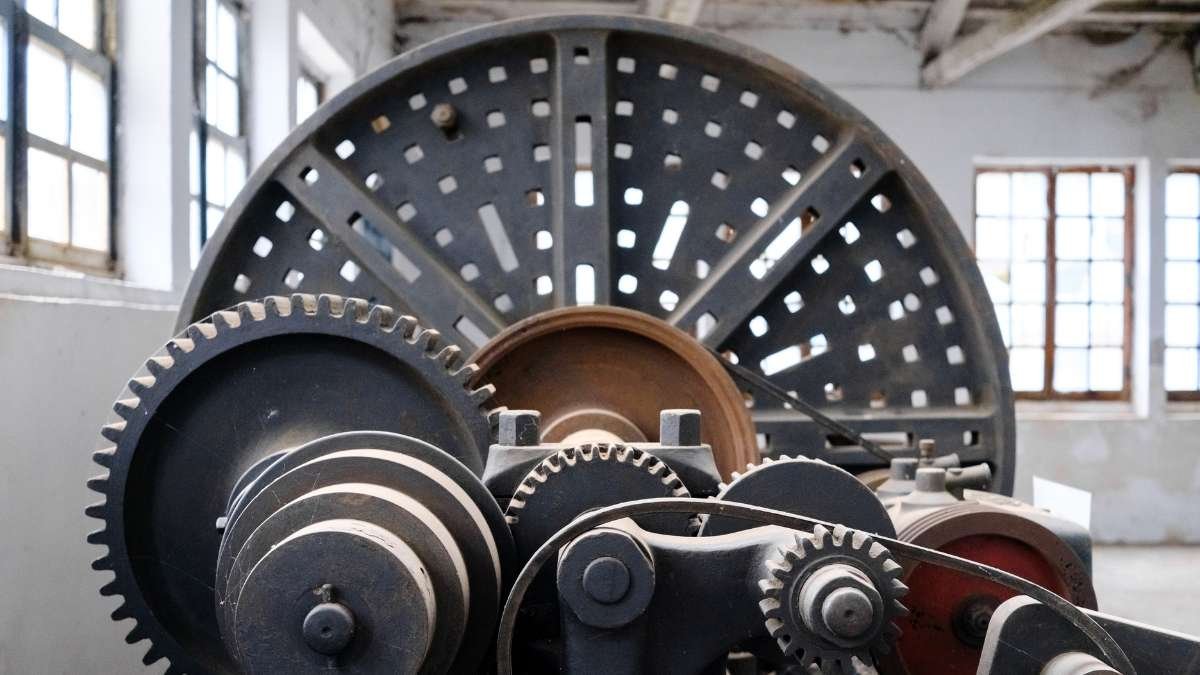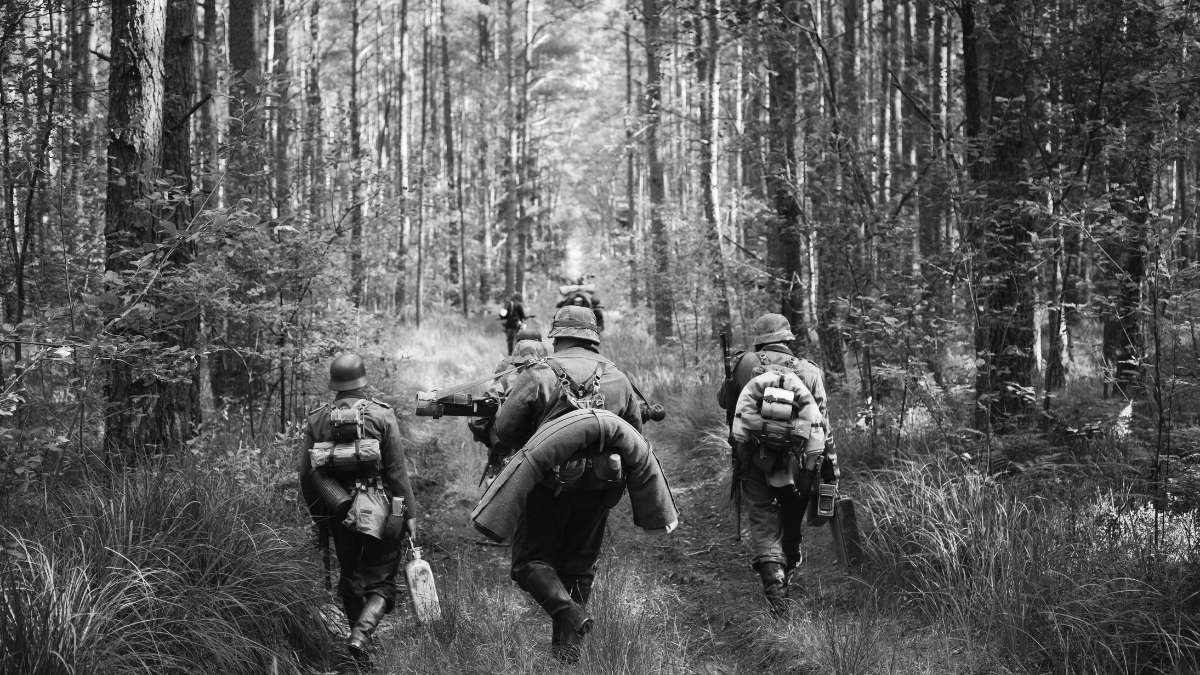History
The Impact Of The Industrial Revolution On Utica
The industrial revolution brought significant changes to Utica, as it did to many cities across the United States. The city saw a shift from an agrarian-based economy to an industrial one, leading to significant growth and development.

The industrial revolution brought significant changes to Utica, as it did to many cities across the United States. The city saw a shift from an agrarian-based economy to an industrial one, leading to significant growth and development.
One of the most significant changes brought by the industrial revolution was the growth of the textile industry in Utica. The city became a hub for textile manufacturing, with mills and factories popping up throughout the area. This growth led to an increase in population as people flocked to the area for job opportunities. The textile industry was instrumental in creating a thriving economy in Utica, and it remained a dominant force in the area for many years.
Another significant impact of the industrial revolution on Utica was the growth of transportation infrastructure. The Erie Canal, which ran through Utica, played a significant role in the growth of industry in the area. The canal provided a way for goods to be transported to and from the city, leading to increased trade and commerce. The growth of railroads also played a crucial role in the city’s development, providing an additional means of transportation and helping to connect Utica to other parts of the country.
The industrial revolution also brought significant changes to the city’s social structure. As factories and mills began to grow, the need for labor increased, leading to an influx of immigrants to the area. Many of these immigrants came from countries such as Italy and Poland and brought with them their cultures and traditions. The growth of industry also led to the development of a new middle class, which led to the growth of the city’s cultural and social institutions.
However, the industrial revolution also had its downsides. As factories and mills grew, so too did pollution and environmental degradation. The growth of industry also led to dangerous working conditions and low wages for many workers, leading to labor unrest and the growth of labor unions.
Despite its challenges, the impact of the industrial revolution on Utica was significant. It helped to create a thriving economy, brought significant changes to the city’s social structure, and helped to connect Utica to other parts of the country. Today, the city is home to a diverse population and continues to be an important center for manufacturing and commerce in the region.
History
The History of Utica’s Saranac Brewery

Introduction
Nestled in the heart of Utica, New York, Saranac Brewery stands as a testament to enduring craftsmanship and resilience. Established over a century ago, this iconic brewery has witnessed significant historical events, weathered numerous challenges, and continues to produce beloved beers that have captivated the palates of many. This blog post delves into the rich history of Utica’s Saranac Brewery, tracing its roots, growth, and the unique contributions it has made to the brewing industry.
Early Beginnings: The Matt Brewing Company
Saranac Brewery’s story begins in 1888 with the founding of the Matt Brewing Company by Francis Xavier Matt I, a German immigrant with a passion for brewing. The brewery, initially called the West End Brewing Company, started as a small operation focusing on traditional German brewing techniques. Francis Xavier Matt I brought with him the old-world brewing traditions that would set the foundation for the company’s future success.
Key Milestones in the Early Years
- 1888: The Matt Brewing Company is established.
- 1890: Introduction of Utica Club, one of the first beers brewed by the company.
- 1900s: The brewery expands its operations and distribution network.
Surviving Prohibition: Innovation and Adaptation
Prohibition, which lasted from 1920 to 1933, was a challenging period for breweries across the United States. Many were forced to shut down, but the Matt Brewing Company managed to survive by pivoting its business model. The company began producing soft drinks and other non-alcoholic beverages to stay afloat during these dry years.
Notable Adaptations
- Soft Drink Production: The brewery produced soft drinks under the label “Utica Club.”
- Innovative Products: They created non-alcoholic malt tonics and other beverages to maintain operations.
Post-Prohibition Era: Revival and Growth
With the repeal of Prohibition in 1933, the Matt Brewing Company was ready to return to brewing beer. The post-Prohibition era marked a period of significant growth and innovation for the brewery. Utica Club beer became a popular choice among consumers, known for its quality and consistency.
Expansion and Innovation
- 1933: Reintroduction of Utica Club beer.
- 1950s: Expansion of the brewery’s facilities to meet growing demand.
- 1960s: Introduction of new beer varieties and marketing campaigns.
The Birth of the Saranac Brand
In the late 1980s, the Matt Brewing Company launched the Saranac brand, named after the nearby Saranac Lake in the Adirondacks. This new line of craft beers was developed to cater to the growing interest in microbrews and craft beers. The introduction of Saranac marked a significant turning point for the company, positioning it as a pioneer in the craft beer movement.
Key Developments in the Saranac Era
- 1985: Launch of the Saranac brand.
- Introduction of Saranac Pale Ale: One of the first craft beers introduced under the Saranac label.
- Expansion of the Saranac Line: The brewery introduced various styles, including lagers, IPAs, and seasonal brews.
Challenges and Resilience
Like many long-standing businesses, Saranac Brewery has faced its share of challenges. From economic downturns to shifts in consumer preferences, the brewery has demonstrated remarkable resilience. The company’s ability to adapt and innovate has been crucial in navigating these obstacles.
Overcoming Adversity
- Economic Challenges: The brewery has weathered several economic downturns by diversifying its product offerings.
- Consumer Trends: Saranac Brewery has kept pace with changing consumer tastes by continually updating its beer portfolio.
Commitment to Quality and Sustainability
Saranac Brewery’s commitment to quality is evident in its brewing process, which combines traditional methods with modern technology. Additionally, the brewery has embraced sustainability initiatives to reduce its environmental impact. This commitment to excellence and sustainability has helped the brewery maintain its reputation and appeal.
Sustainability Initiatives
- Energy Efficiency: Implementation of energy-saving technologies in the brewing process.
- Water Conservation: Efforts to reduce water usage and improve wastewater treatment.
- Recycling Programs: Initiatives to recycle materials and reduce waste.
Community Involvement and Legacy
Saranac Brewery has always been deeply connected to the Utica community. The brewery hosts various events, tours, and festivals that bring people together and celebrate the local culture. This strong community involvement has solidified the brewery’s place as a cherished local institution.
Community Engagement
- Saranac Thursdays: Weekly summer events featuring live music, food, and Saranac beer.
- Brewery Tours: Offering visitors a glimpse into the brewing process and the brewery’s history.
- Local Partnerships: Collaborations with local businesses and organizations to support the community.
Looking to the Future
As Saranac Brewery moves forward, it continues to innovate while honoring its rich heritage. The brewery is poised to explore new brewing techniques, develop unique beer styles, and expand its distribution. With a steadfast commitment to quality and a passion for brewing, Saranac Brewery is set to thrive for many more years to come.
Future Aspirations
- New Beer Styles: Experimentation with new ingredients and brewing methods to create innovative beers.
- Expansion of Distribution: Increasing the availability of Saranac beers in new markets.
- Continued Community Support: Maintaining and enhancing community engagement efforts.
Conclusion
The history of Utica’s Saranac Brewery is a tale of tradition, innovation, and resilience. From its humble beginnings as the Matt Brewing Company to its current status as a renowned craft brewery, Saranac Brewery has remained true to its roots while continually evolving. This dedication to quality, community, and sustainability ensures that Saranac Brewery will remain a beloved fixture in the brewing world for generations to come.
For more Utica History, visit the rest of our site!
History
The History Of Utica’s World War II Memorial
Utica, New York, has a long and proud history of military service, and the city’s World War II Memorial stands as a testament to the sacrifices made by its citizens during that conflict. The memorial is located in the city’s Memorial Parkway, a beautiful tree-lined avenue that serves as a fitting tribute to the men and women who served their country during World War II.

Utica, New York, has a long and proud history of military service, and the city’s World War II Memorial stands as a testament to the sacrifices made by its citizens during that conflict. The memorial is located in the city’s Memorial Parkway, a beautiful tree-lined avenue that serves as a fitting tribute to the men and women who served their country during World War II.
The idea for a World War II Memorial in Utica dates back to the early 1950s, when local veterans began discussing ways to honor their fallen comrades. In 1953, the city formed a committee to explore the possibility of building a memorial, and by 1955, plans were underway to construct a monument in Memorial Parkway.
The memorial was designed by local architect R. Harry Compton and was dedicated on Memorial Day in 1956. The centerpiece of the monument is a bronze statue of a soldier, representing the thousands of men and women from Utica who served in the armed forces during World War II. The statue stands atop a granite pedestal, which features the names of the 447 Uticans who lost their lives in the conflict.
The World War II Memorial is not only a monument to those who made the ultimate sacrifice; it also serves as a reminder of the sacrifices made by all those who served their country during the war. The monument is a place where visitors can reflect on the bravery and selflessness of those who fought for freedom and democracy.
Over the years, the World War II Memorial has become an important part of Utica’s history and identity. It is a place where people gather to honor the past and pay tribute to the men and women who made the ultimate sacrifice for their country. Today, the memorial remains an important part of Utica’s heritage, and a testament to the city’s proud tradition of military service.
History
The History Of Utica’s Adirondack Scenic Railroad
The Adirondack Scenic Railroad is a historic railroad that runs through the scenic Adirondack Mountains and is a beloved attraction for visitors to Utica, New York. The history of the Adirondack Scenic Railroad dates back to the late 1800s, when rail travel was a popular mode of transportation.

The Adirondack Scenic Railroad is a historic railroad that runs through the scenic Adirondack Mountains and is a beloved attraction for visitors to Utica, New York. The history of the Adirondack Scenic Railroad dates back to the late 1800s, when rail travel was a popular mode of transportation.
The railroad was originally built by the Mohawk and Malone Railway Company in 1892 as a way to transport goods and passengers through the Adirondack Mountains. The line was later purchased by the New York Central Railroad, which expanded the line and added additional tracks.
The Adirondack Scenic Railroad as it exists today was established in 1992, when a group of rail enthusiasts purchased a section of the old New York Central Railroad line and began restoring it to its former glory. Today, the Adirondack Scenic Railroad offers visitors the opportunity to take a scenic journey through the Adirondack Mountains on restored trains, complete with vintage cars and an on-board narrator.
The Adirondack Scenic Railroad is a popular attraction for families and train enthusiasts alike. The journey begins in Utica, where passengers can board the train and begin their scenic journey through the Adirondacks. Along the way, passengers will see breathtaking views of the mountains, forests, and streams that make up this beautiful region.
One of the most popular sections of the Adirondack Scenic Railroad is the trip from Utica to Thendara, which takes passengers through the scenic Moose River Valley. This section of the railroad is known for its beautiful scenery, including the stunning fall foliage that attracts visitors from around the world.
The Adirondack Scenic Railroad also offers a number of special events throughout the year, including holiday train rides and themed excursions. These events are a great way to experience the beauty of the Adirondacks while enjoying a unique and memorable experience.
In addition to its scenic train rides, the Adirondack Scenic Railroad is also home to a number of historic locomotives and train cars. Visitors can take a tour of the railroad’s restoration shop and see these vintage trains up close, learning about their history and the restoration process.
The Adirondack Scenic Railroad is an important part of the history of Utica and the Adirondack Mountains. It is a testament to the importance of rail travel in the development of this region, and a reminder of the beauty and importance of preserving our historic landmarks and traditions. Whether you’re a train enthusiast, a history buff, or simply looking for a unique and memorable experience, the Adirondack Scenic Railroad is definitely worth a visit.
-

 Food3 years ago
Food3 years agoThe Best Pizza Places In Utica
-

 Guide3 years ago
Guide3 years agoA Guide To Utica’s Shopping Districts
-

 History3 years ago
History3 years agoThe History Of Utica’s Music Scene
-

 City News3 years ago
City News3 years agoThe History Of Utica New York
-

 Food3 years ago
Food3 years agoA Guide To Utica’s Farmers’ Markets
-

 Entertainment3 years ago
Entertainment3 years agoA Guide To Utica’s Nightlife
-

 Food3 years ago
Food3 years agoThe Best Burger Joints In Utica
-

 History3 years ago
History3 years agoThe History Of Utica’s Stanley Theatre












